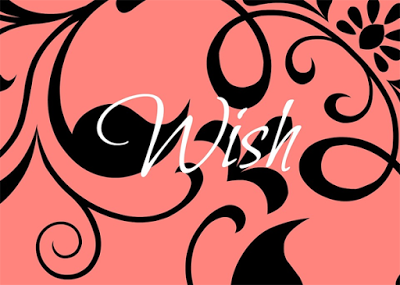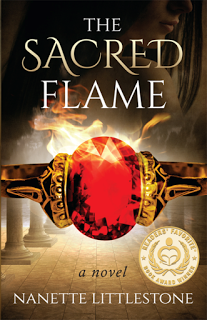 What’s your wish?
What’s your wish? When I was a girl I wished for a pony. My wish was impractical as I lived in the city, had nowhere to keep a horse, and no means of caring for it. But that didn’t stop me from wishing. I loved palominos, so I imagined a beautiful, small palomino that would be mine, all mine. And every birthday I was disappointed. After 10 years of wishing I gave up.
What I didn’t know then was that wishing is only part of the equation. A wish is a dream that your heart has. But to make that dream a reality requires effort. The first step is to visualize what you want. Then you put your dream into action. You take the appropriate steps to reach your goal. If I’d really wanted a pony, I would have visited a horse farm or two. Talked to the owner about caring for a horse. Understood the requirements for feeding, veterinary care, the needs of the horse. Researched places for boarding a horse. Spent time mucking out stalls and oiling saddles and hefting hay bales to see if that was really something I wanted to do.
So what’s your wish? Do you want to write a book? Get your book published? Be part of a collaboration? Create a book launch on Amazon?
It’s time to dust off your wish box. You can see your dream come true if you follow these steps:
1. Visualize what you want.
 If you want to write a book, see yourself writing. Picture yourself at your desk or computer and words flowing from you onto the paper (or screen). See the Table of Contents, chapter headings, pages of text. Write the Acknowledgments, the dedication, the introduction. If you want to publish a book, see your book. Hold it in your hands. Feel the cover, flip through the pages, breathe in the smell of the paper and ink. See yourself unpacking boxes of books or looking at the finished Seller’s page on Amazon. Believe it’s yours. 2. Make a commitment.
If you want to write a book, see yourself writing. Picture yourself at your desk or computer and words flowing from you onto the paper (or screen). See the Table of Contents, chapter headings, pages of text. Write the Acknowledgments, the dedication, the introduction. If you want to publish a book, see your book. Hold it in your hands. Feel the cover, flip through the pages, breathe in the smell of the paper and ink. See yourself unpacking boxes of books or looking at the finished Seller’s page on Amazon. Believe it’s yours. 2. Make a commitment.  Writing doesn’t happen on its own. If it did (and I truly wish it would), I’d be the proud author of over 20 novels. Unfortunately, you have to make the commitment to write. Start with a plan. Decide that you’re going to write every day, for whatever time period, and that writing is more important than anything else for that duration. Mark it on your calendar. Write it on your To-Do list. Set your timer. If you’re worried about failing, start small. Assign yourself 30 minutes a day. Then sit down and write for those 30 minutes. If you stare at the paper the whole 30 minutes, that’s fine. Do it again the next day. The words will flow eventually. 3. Watch for signs.
Writing doesn’t happen on its own. If it did (and I truly wish it would), I’d be the proud author of over 20 novels. Unfortunately, you have to make the commitment to write. Start with a plan. Decide that you’re going to write every day, for whatever time period, and that writing is more important than anything else for that duration. Mark it on your calendar. Write it on your To-Do list. Set your timer. If you’re worried about failing, start small. Assign yourself 30 minutes a day. Then sit down and write for those 30 minutes. If you stare at the paper the whole 30 minutes, that’s fine. Do it again the next day. The words will flow eventually. 3. Watch for signs.  When you “image” something (or imagine it), you activate the process for your subconscious to send messages to your conscious mind. Your intuition knows the path for you to take. You may get a whisper for a book title or scene within your story. You may feel a nudge to call someone, get an email from a business acquaintance, receive an invitation to a workshop or to speak to an audience about your topic. Hansel left bread crumbs on the forest path to help him find his way back home. These “signs” are indicators of a path leading to your desired goal. By following the signs you’re on your way. An easy way to assist the process is to frequently ask, “What’s my next step?”
When you “image” something (or imagine it), you activate the process for your subconscious to send messages to your conscious mind. Your intuition knows the path for you to take. You may get a whisper for a book title or scene within your story. You may feel a nudge to call someone, get an email from a business acquaintance, receive an invitation to a workshop or to speak to an audience about your topic. Hansel left bread crumbs on the forest path to help him find his way back home. These “signs” are indicators of a path leading to your desired goal. By following the signs you’re on your way. An easy way to assist the process is to frequently ask, “What’s my next step?”4. Take action.
 If you don’t “act” on the signs, nothing will happen. There are many days I receive whispers that could lead to pages of writing, yet I shrug them aside because I’m doing something else. Don’t let these pass you by. Act on them! Put your butt in your chair and write. Talk to a professional about publishing. Visit a printer and discover what the printing process is all about. “Be” the writer you want to be.5. Give thanks.
If you don’t “act” on the signs, nothing will happen. There are many days I receive whispers that could lead to pages of writing, yet I shrug them aside because I’m doing something else. Don’t let these pass you by. Act on them! Put your butt in your chair and write. Talk to a professional about publishing. Visit a printer and discover what the printing process is all about. “Be” the writer you want to be.5. Give thanks.  Gratitude opens the heart and mind to receive. It allows you to be receptive—to ideas, to people, to opportunities. The more grateful you arefor what you have, the more open you are to receiving more. Soon, that writing will become a finished book, that book will be published, and your Amazon page will be shouting “bestseller”!Nanette Littlestone is an author, editor, writing coach, and publisher with Words of Passion. She specializes in helping women write from the heart so they can put their passion into words and inspire others. Finding that place of struggle within her clients and unlocking the door to create change and opportunity is what makes her heart soar.Her coaching programs and services offer clients unique and in-depth ways to strengthen their manuscripts and make their writing sing.
Gratitude opens the heart and mind to receive. It allows you to be receptive—to ideas, to people, to opportunities. The more grateful you arefor what you have, the more open you are to receiving more. Soon, that writing will become a finished book, that book will be published, and your Amazon page will be shouting “bestseller”!Nanette Littlestone is an author, editor, writing coach, and publisher with Words of Passion. She specializes in helping women write from the heart so they can put their passion into words and inspire others. Finding that place of struggle within her clients and unlocking the door to create change and opportunity is what makes her heart soar.Her coaching programs and services offer clients unique and in-depth ways to strengthen their manuscripts and make their writing sing.Nanette created the Partner Up! Book Program to help women entrepreneurs get published the easy way through collaborative books. She is the editor and coauthor ofThe 28-Day Thought Diet; editor andpublisher of F.A.I.T.H. – Finding Answers in the Heart, Volumes I and II, author of the e-bookOvercoming Writer's Block: Moving from Fear to Passion, and author of the historical novel The Sacred Flame. She is at work on her next novel, Bella Toscana, the sequel to The Sacred Flame.
The Sacred Flame
 What are you willing to sacrifice for love?
What are you willing to sacrifice for love?It is the year 216 BC. Livia is a Vestal Virgin sworn to the goddess Vesta. The obligations of duty, dedication, and chastity that have been her life for almost thirty years are almost ended. In just a few months she will be free to live a normal life, free to marry her childhood companion. But the High Priestess, the Vestalis Maxima, collapses from a serious illness and Livia’s hopes splinter like Jupiter’s lightning. Thrust into the unwanted role of leadership, she must extend her duties ad infinitum. To complicate matters, the Fates lead her to Gaius, an Equestrian commander, who has loved her secretly for many years. As summer heat and the threat of Hannibal descend on Rome, Gaius and Livia are caught in a sticky web of deceit and forbidden love that threatens both their worlds.
The Sacred Flame at Amazon

